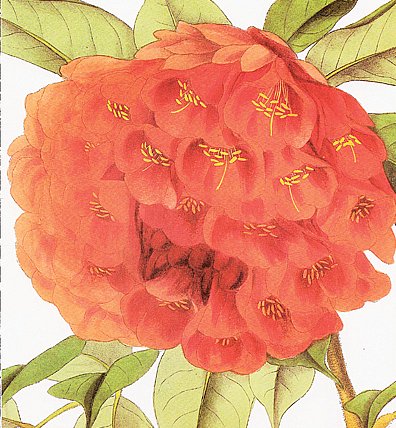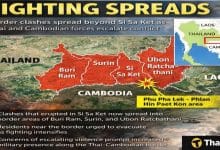Phuket Gardening – It’s all about looking pretty

PHUKET: In the next few weeks, this space will be devoted to small trees suitable for your Phuket garden.
The distinction between small trees and large shrubs is a blurred one. So what are the differences between shrubs and small trees?
Both are perennials and both live for a number of years, but neither is a herbaceous perennial, as are fleshy plants such as Dieffenbachia, Aglaonema or even the banana, all of which lack permanent woody tissue in their stems.
Trees need these woody stems to support the heavy boughs and foliage of a large structure. Moreover both shrubs and trees renew their growth above ground: they do not have to put up new aerial growths from a rootstock every spring, but can sprout again from the previous year’s branches.
Small trees will be defined here as woody plants rising well above human height. Usually they possess a single bole or trunk, whereas large shrubs are normally bushy and produce a number of main stems: for example Azaleas, oleanders, or Hibiscus.
While such shrubs are generally better at providing overall cover in the garden bed, small trees, especially those with spreading canopies, are better at providing pockets of shade.
Thailand, which has extraordinary biodiversity, has a treasure-trove of small trees to choose from. Some are ornamental, with either decorative blooms or leaves (sometimes both); others are primarily functional, and provide edible fruit. A select few have all the virtues, like European apples, plums, or cherries. These trees are both beautiful and delicious.
Let’s begin with the ornamental ones. Brownea is a small tree that does well here, but has somehow avoided mention in this column. Like the peacock flower, it is a legume that belongs to the Caesalpinia family – so, not surprisingly its fruit resembles a flattened, woody pod. This gives Brownea its common name ‘scarlet flame bean’. When new, Brownea’s evergreen leaves hang limply like bundles of rags, at first bronze-colored, then cream and finally, erect and deep green in color.
The blooms are also distinctive since they are grouped in heads that hang below the leaves. Pink, red or orange, the actual flowers are funnel-shaped and point downwards beneath a group of colored bracts.
In the case of Brownea ariza, the flowers are very large – up to ten inches across – but are sparsely scattered among the branches.
Capitella, which hails from equatorial South America, has attractive pink flowers with long, cream stamens. Latifolia is even more exotic, with brilliant red flowers, flaring petals and huge pink stamens with yellow anthers.
Brownea is a tropical par excellence, requiring ample summer rainfall and plenty of humidity. It should be quite enjoying this year! A slow grower even under ideal conditions, it nonetheless satisfies two of our main criteria: one, both flowers and foliage are decorative; two, it is an excellent shade tree with a dense canopy.
Note, however, that the lower branches tend to sag toward the ground, and it may be necessary to raise them on props to allow viewing of the spectacular flower heads, as well to enhance the tree’s shade value. It is predictably much in demand throughout hotter climes, particularly for use in lawns and courtyards.
Brownea is not the easiest tree to start. Sowing seeds may be the most effective method – if you can get hold of some – for cuttings are difficult to strike. It’s best perhaps to track down a potted plant in a good nursery.
Phuket gardening tip of the week
Weeds are plants growing where gardeners don’t want them to grow. They rob other plants of water, nutrients and sunlight, they can harbor pests, and they look unattractive.
Some plants, such as bindweed, are regarded as pests wherever they grow; others are weeds only in specific situations such as when they invade a lawn.
Some plants spread so aggressively in the right conditions that they are considered weeds, especially climbers such as the butterfly pea or morning glory, and many varieties of grass.
Some ornamentals have gone beyond their native habitats, invading other environments where they have been introduced either by accident or design. Water hyacinth and water lettuce are pests in parts of America. Lantana and rubber vine are weeds in Queensland.
On the positive side, weeds can help hold soil together on steep banks, preventing erosion – something that is now an important consideration.
Phuket Gardening is Phuket Gazette columnist Patrick Campbell’s feature of all things flora.
If you have a garden that you would like featured on this page, please email Patrick by clicking here.
Keep checking our online Phuket Lifestyle pages for regular gardening features and tips.
— Patrick Campbell
Latest Thailand News
Follow The Thaiger on Google News:


























